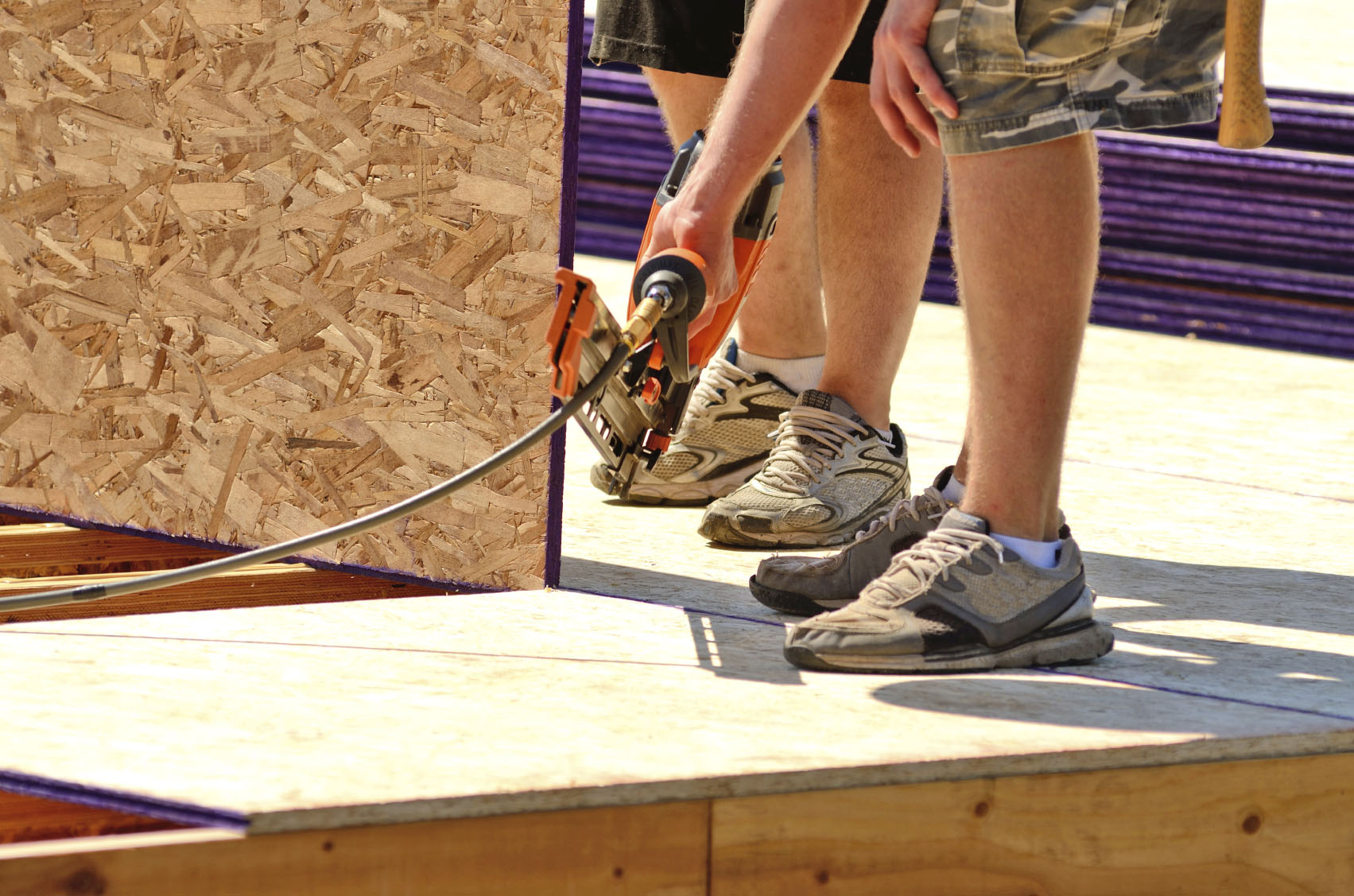
When comparing the fossil fuel use and carbon footprint of raised wood and slab-on-grade concrete, the APA found that wood used considerably less fossil fuel and contributed less  to global warming than concrete.
to global warming than concrete.
Efforts to reduce fossil fuel consumption and contain global warming are affecting the way in which building codes are created and shifting consumer needs. This has resulted in greener building standards which require significant reductions in energy consumption from the building industry in every process from creating building materials, to construction and on to the performance and life cycle of the building itself.
There are many ways in which wood can help to reduce fossil fuel consumption in the construction industry, some of which include:
- Forests act as carbon sinks as growing wood converts greenhouse gases to oxygen, thereby mitigating much of the CO2 emissions created when harvesting, processing and installing wood. Young forests produce 1 ton of oxygen and absorb 1.4 tons of carbon dioxide for every ton of wood produced.
- Wood can be diverted from the landfill to be burned in boilers which means that fewer fossil fuels are required for heating.
- When compared with other construction materials, wood uses less energy for extraction, transportation, processing, construction and maintenance.
- Wood is a better insulator than other building materials and can therefore add to the energy efficiency of a building.
The suitability of wood to sustainability in construction has been established over time through Life Cycle Assessment (LCA) studies. By considering the environmental impact of building materials throughout their lifecycles, the LCA is able to compare the impacts of different building materials.
Using the LCA methodology, a 2004 CORRIM study compared the environmental impacts of two flooring systems; one concrete slab-on-grade floor and the other a raised-wood floor. They conducted experiments in a home in Atlanta Georgia where a warmer climate comes into play and another study in the colder climate of Minneapolis. Both studies looked at flooring systems covering a 2,500 square-foot area in a single-story residential home.
From the APA: “The CORRIM study found that the wood house was better for the environment than the steel house in terms of embodied energy consumption, global warming potential, air pollution, and water pollution. The study also showed that wood was favorable to its concrete counterpart in embodied energy consumption, global-warming potential, air pollution and solid waste production.
The CORRIM study clearly indicates that the use of wood in both locations presents significantly less environmental impact than the steel or concrete counterparts, making wood the most sustainable building material over the lifetime of the product.”
The study mapped the lifecycles of the materials utilized in constructing the floors from the extraction of raw materials, through production of construction materials, onto transport and the building of the structure all the way through to the eventual demolition of the building at the end of its lifecycle.
What it found was that wood has less than half the global warming impact in a cradle-to-grave comparison. From the APA: “Total energy consumption on a cradle-to-gate basis was comparable for the two flooring systems; however, the fossil energy requirements for the concrete slab was nearly double that of the wood floor. This is due in large measure to the utilization of biomass energy in the manufacturing of wood products.”
When one considers the full cradle-to-grave lifecycle, the difference between the two flooring systems becomes far more pronounced with the wood flooring system actually rendering a negative global warming carbon emissions measurement whether the flooring ends up in the landfill or as boiler fuel.
A second study by the Athena Institute found that increased wood use was linked to reduced fossil fuel consumption and potential for global warming.
The demand for wood building products is what keeps forestation levels high. There is more land under forest in the US today (about 1/3 of the land mass) than there was in 1920. That’s because the demand for wood products encourages landowners to plant more than two billion trees a year. If the demand was to drop off, landowners would find more profitable crops.
Manufactured wood products like OSB make even more efficient use of wood resources as they can be manufactured from faster-growing trees. The wood-chip byproducts of manufactured wood products can be used for paper or fuel and these products overcome many of the inherent defects which occur naturally in wood.
From the APA: “Designers can order engineered wood products such as beams and headers to be manufactured to the exact specification for the particular project, reducing jobsite waste and promoting the maximization of resource efficiency. And the technological assurances of strength and stiffness mean engineers can design using fewer structural components, and therefore less of the resource.”
